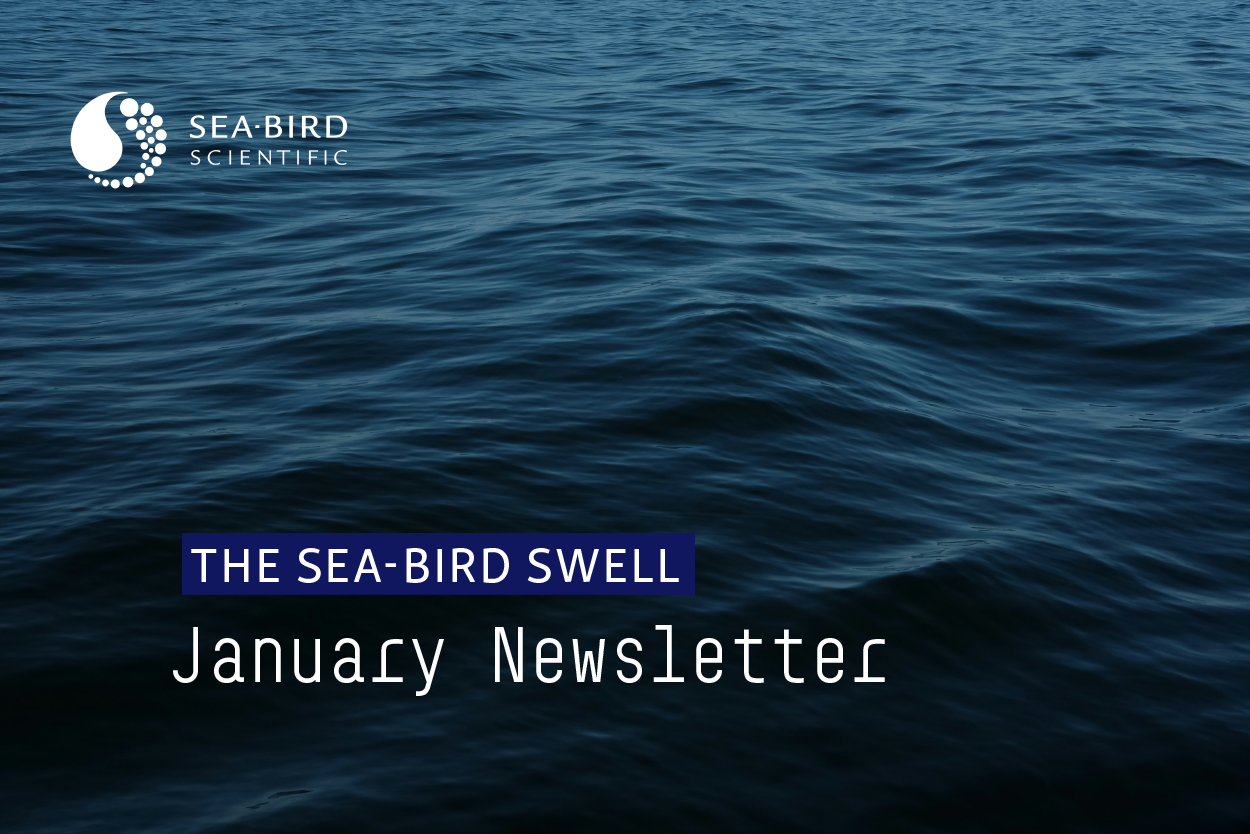Q&A: Erratic Profiles
November 2019 Newsletter

The data above come from a profiling CTD, deployed in sea conditions that caused approximately 1-meter ship heave. Two things stick out – relatively unchanging salinity data during the downcast, and noisy data during the upcast (shown in light blue and pink).
Can you identify the cause of this problem?
The figure above shows a zoomed-in view of 200 – 240 meters depth. Ship heave is shown in the oscillations in descent rate. If you look closely, a “bump” in salinity and temperature corresponds almost perfectly with each motion of the ship. This is a clear indication that the pump isn’t working – when a CTD has a functional pump, the temperature and conductivity sensors have a consistent flow of water regardless of descent rate and sea conditions. The resulting pumped data are smooth, with minimal effect from ship heave.
Without a pump, the flow of water is dependent on the motion of the CTD package, where a faster descent rate will force more water through the plumbing. Data from the downcast are usually less affected, as the downward motion of the CTD package causes some flow through the plumbing. On the upcast however, water easily becomes entrained in the CTD’s plumbing, and may be unchanging, or will have a strong correlation with ship heave.
Read our Troubleshooting Guide for profiling CTDs to learn more troubleshooting techniques.
Related Posts
Featured Posts
UG2 Workshop 2024
We hope to see you at UG2 '24 We are excited to sponsor the upcoming 2024 Glider Workshop in Ann Arbor, Michigan, from September 10 - 12, 2024. Overview This workshop will bring together the global underwater glider community to strengthen international collaboration...
Oceanology International 2024
We hope to see you at #Oi24 We are excited to return to Oceanology International 2024 again in London, UK from March 12-14. Overview Oceanology International brings together 500+ exhibitors in the only event that links the three key players in the industry:...
Ocean Sciences Meeting 2024
We hope to see you at #OSM24 We are excited to return to Ocean Sciences Meeting 2024 in New Orleans, Louisiana from February 18-23 at booth number #527. Overview The Ocean Sciences Meeting 2024 is co-sponsored by the American Geophysical Union, the Association for the...
Science and Technology
Platform



